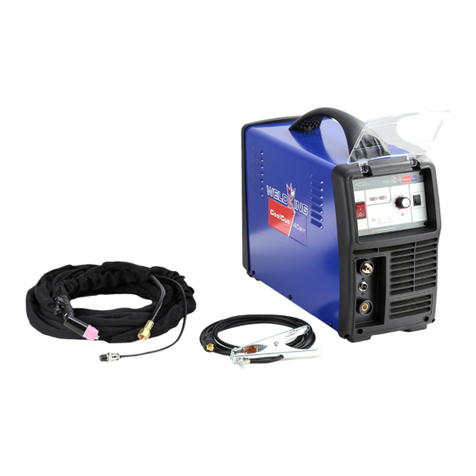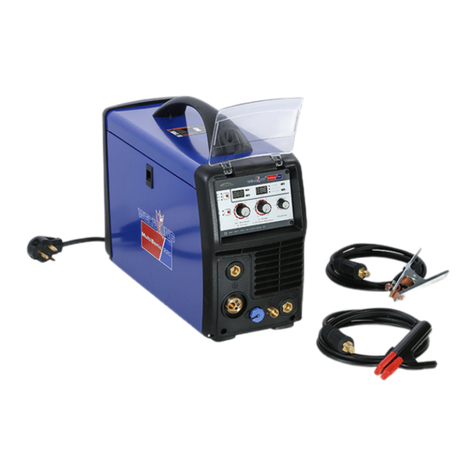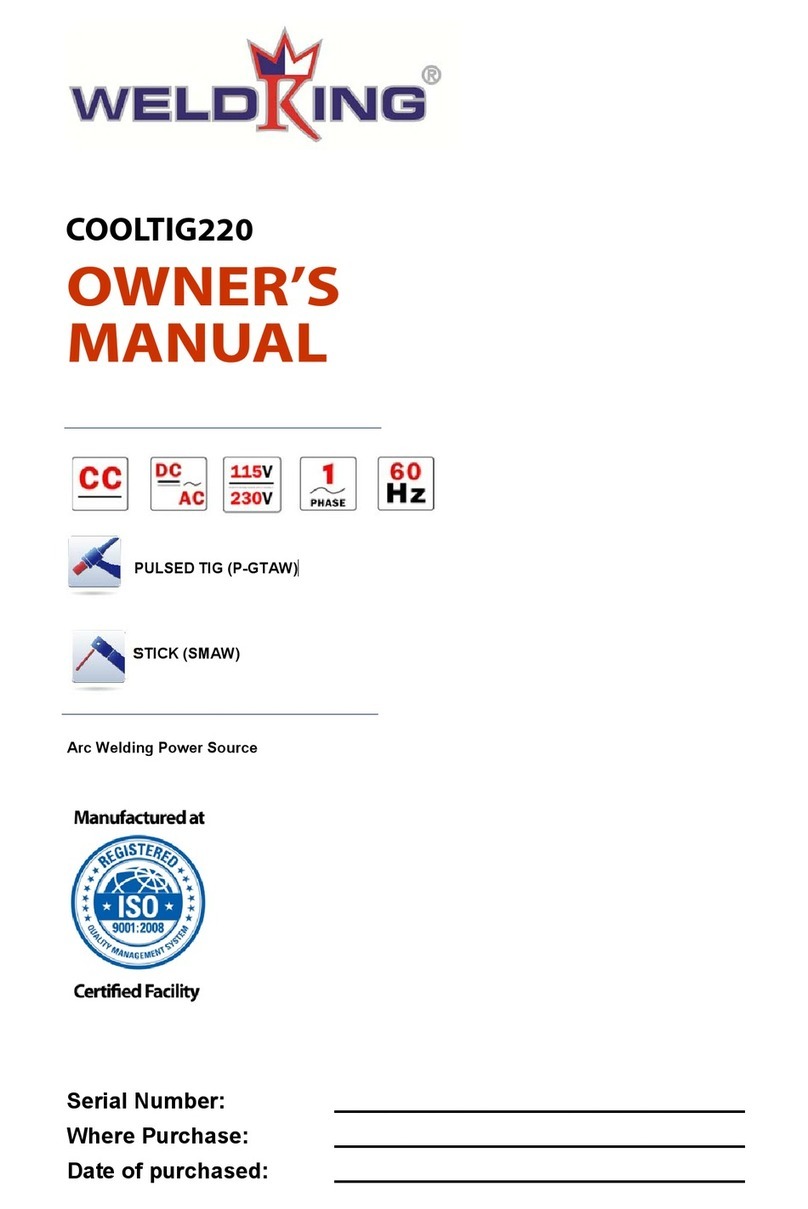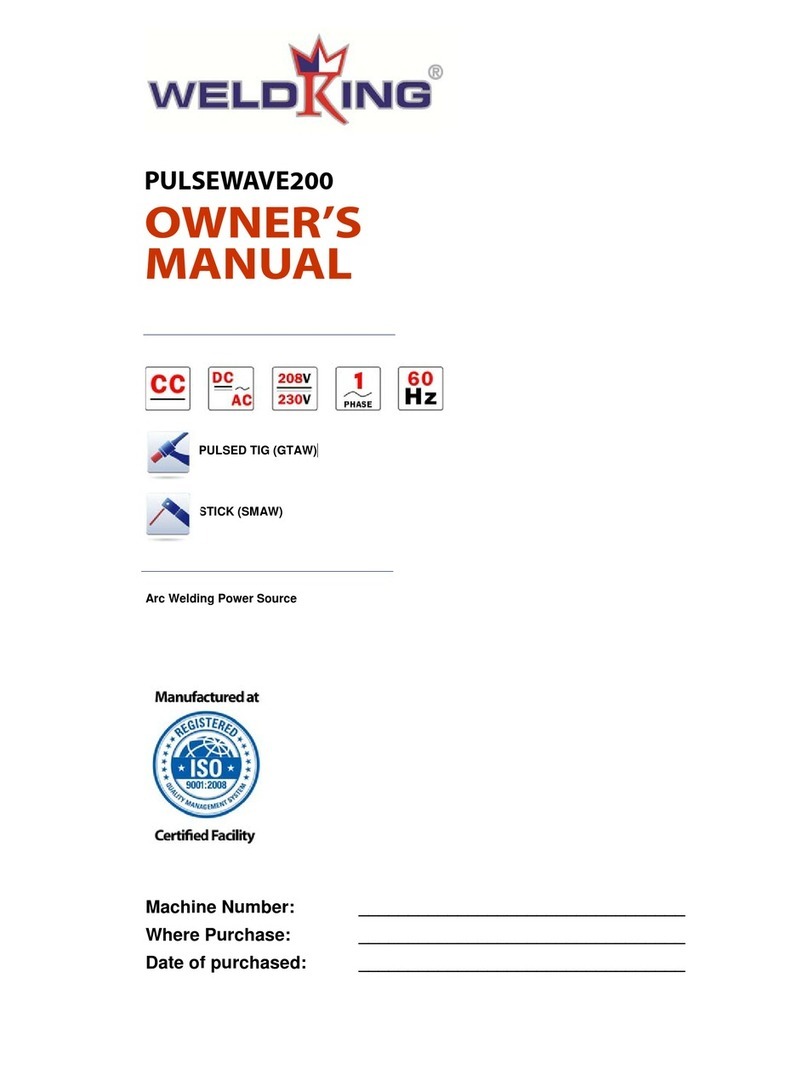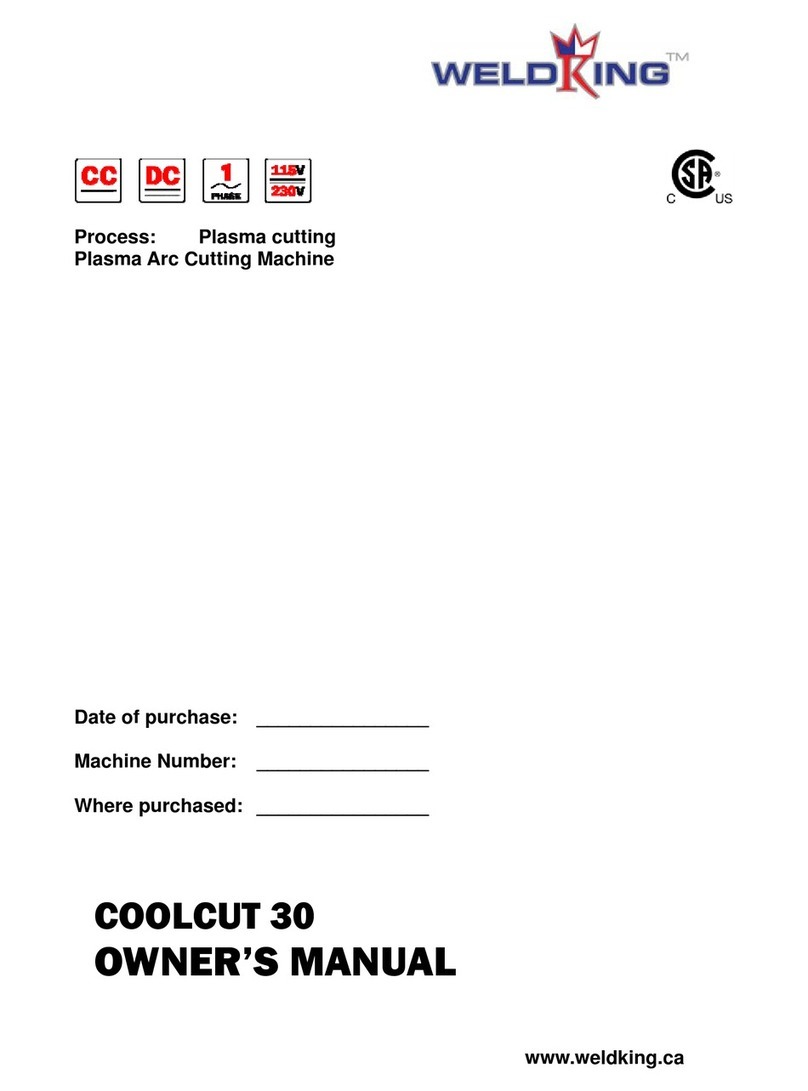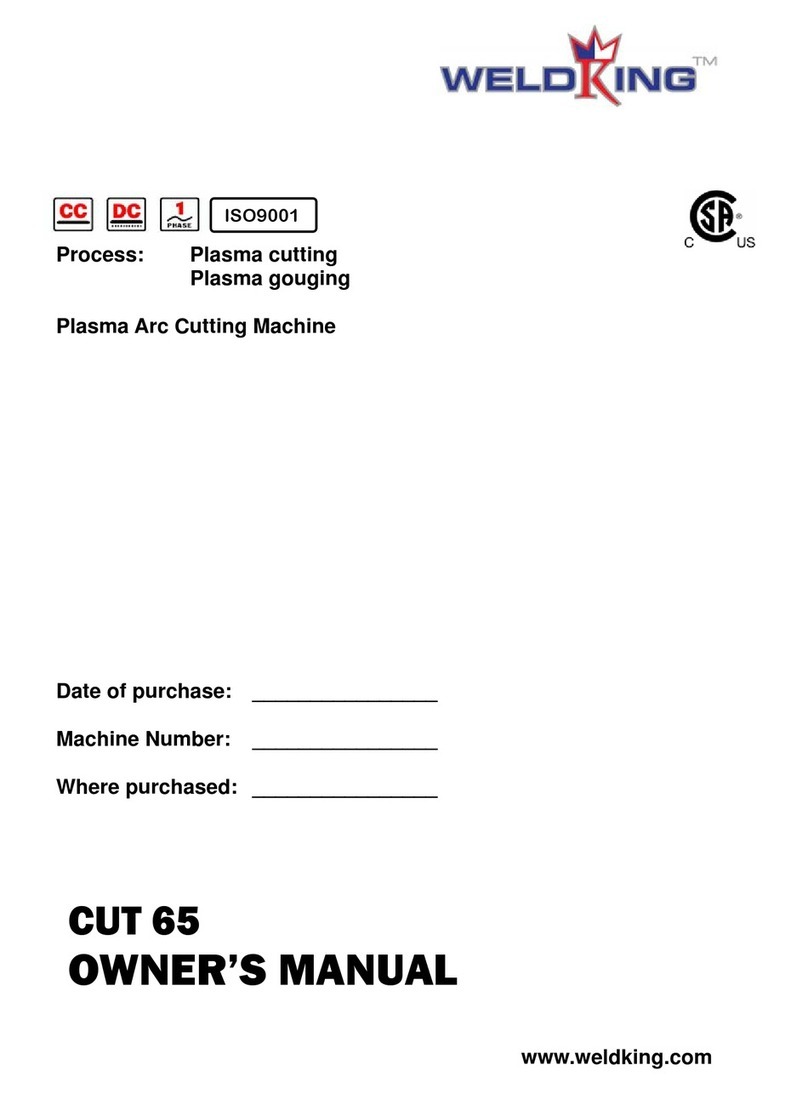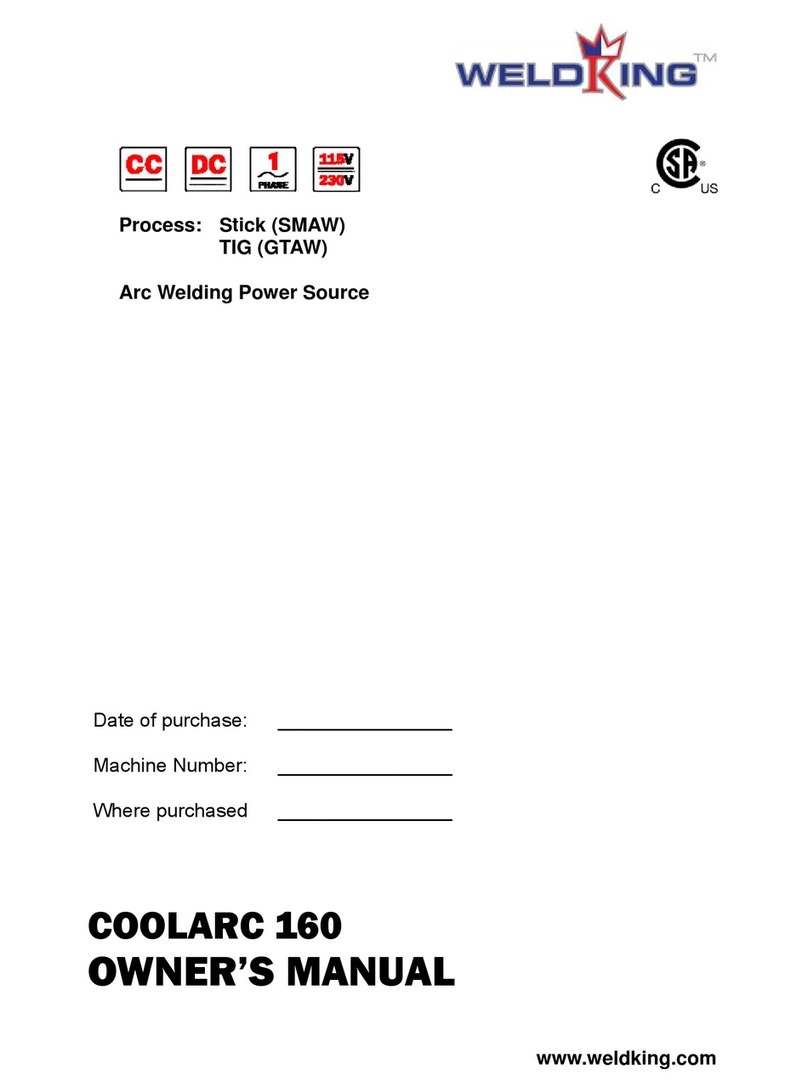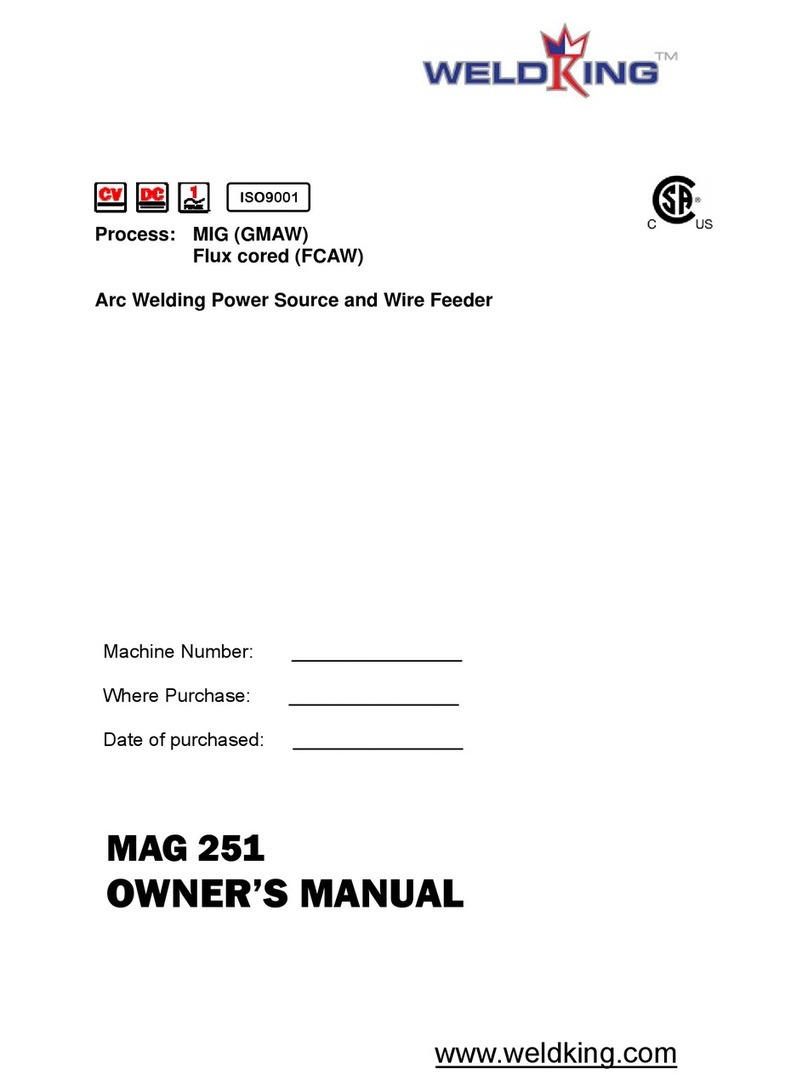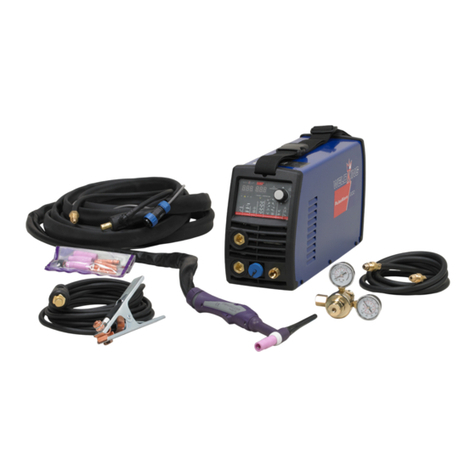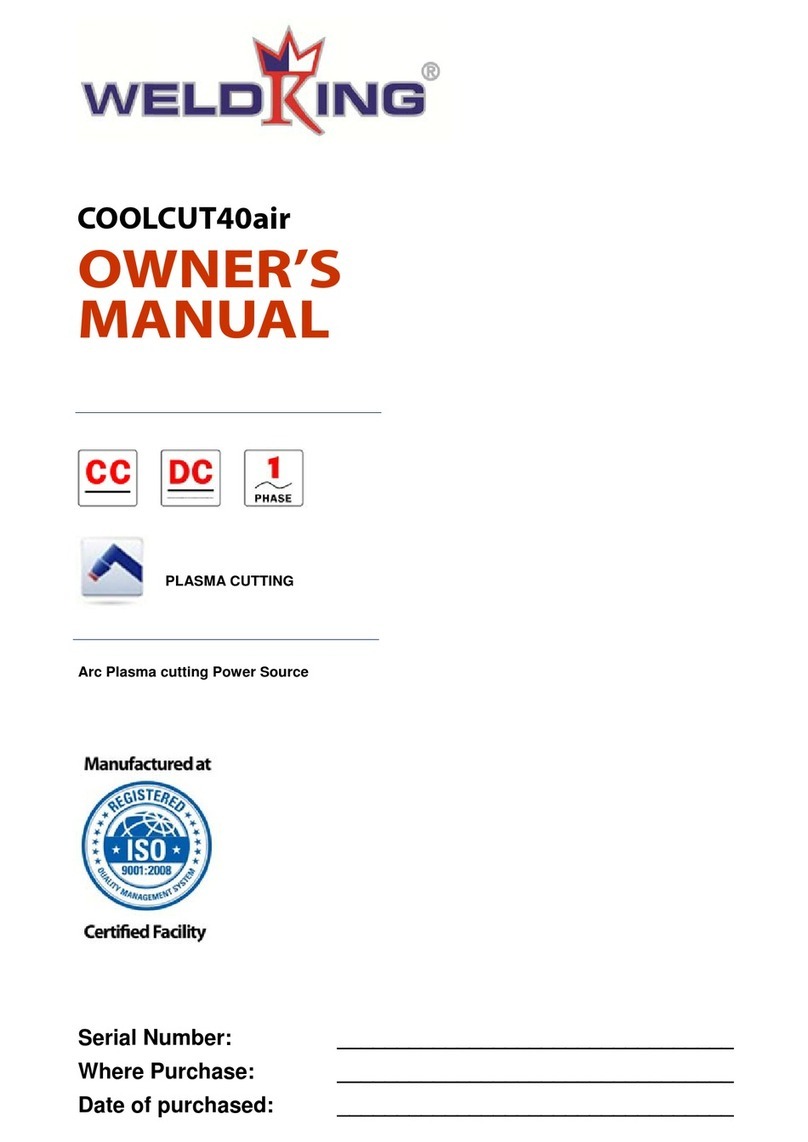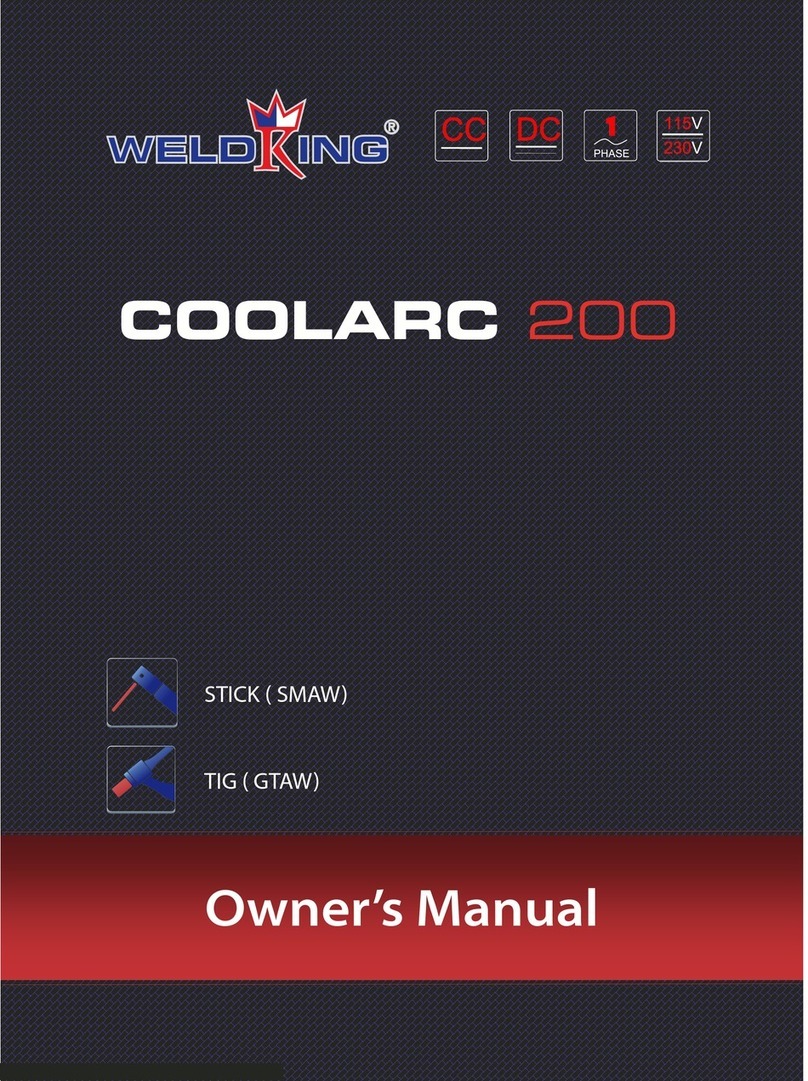
Page 2
voltage. In most situations, use of a DC,
constant voltage wire welder is
recommended. And, do not work alone!
yDisconnect input power or stop engine
before installing or servicing this equipment.
Lockout/tagout input power according to
OSHA 29 CFR 1910.147 (see Safety
Standards).
yProperly install and ground this equipment
according to its Owner’s Manual and
national, state, and local codes.
yAlways verify the supply ground −check
and be sure that input power cord ground
wire is properly connected to ground
terminal in disconnect box or that cord plug
is connected to a properly grounded
receptacle outlet.
yWhen making input connections, attach
proper grounding conductor first −
double-check connections.
yFrequently inspect input power cord for
damage or bare wiring −replace cord
immediately if damaged −bare wiring can
kill.
yTurn off all equipment when not in use.
yDo not use worn, damaged, undersized, or
poorly spliced cables.
yDo not drape cables over your body.
yIf earth grounding of the workpiece is
required, ground it directly with a separate
cable.
yDo not touch electrode if you are in contact
with the work, ground, or another electrode
from a different machine.
yDo not touch electrode holders connected
to two welding machines at the same time
since double open-circuit voltage will be
present.
yUse only well-maintained equipment.
Repair or replace damaged parts at once.
Maintain unit according to manual.
yWear a safety harness if working above
floor level.
yKeep all panels and covers securely in
place.
yClamp work cable with good metal-to-metal
contact to workpiece or worktable as near
the weld as practical.
yInsulate work clamp when not connected to
workpiece to prevent contact with any metal
object.
yDo not connect more than one electrode or
work cable to any single weld output
terminal.
SIGNIFICANT DC VOLTAGE exists
after removal of input power on
inverters.
yTurn Off inverter, disconnect input power,
and discharge input capacitors according to
instructions in Maintenance Section before
touching any parts.
yNe pas toucher aux pièces électriques sous
tension.
yPorter des gants isolants et des vêtements
de protection secs et sans trous.
yS’isoler de la pièce à couper et du sol en
utilisant des housses ou des tapis assez
grands afin d’éviter tout contact physique
avec la pièce à couper ou le sol.
yNe pas se servir de source électrique à
courant électrique dans les zones humides,
dans les endroits confinés ou là où on
risque de tomber.
ySe servir d’une source électrique à courant
électrique UNIQUEMENT si le procédé de
soudage le demande.
ySi l’utilisation d’une source électrique à
courant électrique s’avère nécessaire, se
servir de la fonction de télécommande si
l’appareil en est équipé.
yD’autres consignes de sécurité sont
nécessaires dans les conditions suivantes :
risques électriques dans un environnement
humide ou si l’on porte des vêtements
mouillés ; sur des structures métalliques
telles que sols, grilles ou échafaudages ; en
position coincée comme assise, à genoux
ou couchée ; ou s’il y a un risque élevé de
contact inévitable ou accidentel avec la
pièce à souder ou le sol. Dans ces
conditions, utiliser les équipements suivants,
dans l’ordre indiqué : 1) un poste à souder
DC à tension constante (à fil), 2) un poste à
souder DC manuel (électrode) ou 3) un
poste à souder AC à tension à vide réduite.
Dans la plupart des situations, l’utilisation
d’un poste à souder DC à fil à tension
constante est recommandée. En outre, ne
pas travailler seul !
yCouper l’alimentation ou arrêter le moteur
avant de procéder à l’installation, à la
réparation ou à l’entretien de l’appareil.
Déverrouiller l’alimentation selon la norme
OSHA 29 CFR 1910.147 (voir normes de
sécurité).
yInstaller le poste correctement et le mettre
à la terre convenablement selon les
consignes du manuel de l’opérateur et les
normes nationales, provinciales et locales.
yToujours vérifier la terre du cordon
d’alimentation. Vérifier et s’assurer que le fil
de terre du cordon d’alimentation est bien
raccordé à la borne de terre du sectionneur
ou que la fiche du cordon est raccordée à
une prise correctement mise à la terre.
yEn effectuant les raccordements d’entrée,
fixer d’abord le conducteur de mise à la
terre approprié et contre-vérifier les
connexions.
yVérifier fréquemment le cordon
d’alimentation afin de s’assurer qu’il n’est
pas altéré ou à nu, le remplacer
immédiatement s’il l’est. Un fil à nu peut
entraîner la mort.
yL’équipement doit être hors tension lorsqu’il
n’est pas utilisé.
yNe pas utiliser des câbles usés,
endommagés, de grosseur insuffisante ou
mal épissés.
yNe pas enrouler les câbles autour du corps.
ySi la pièce soudée doit être mise à la terre,
le faire directement avec un câble distinct.
yNe pas toucher l’électrode quand on est en
contact avec la pièce, la terre ou une
électrode provenant d’une autre machine.
yNe pas toucher des porte électrodes
connectés à deux machines en même
